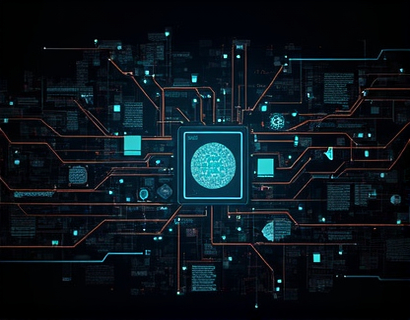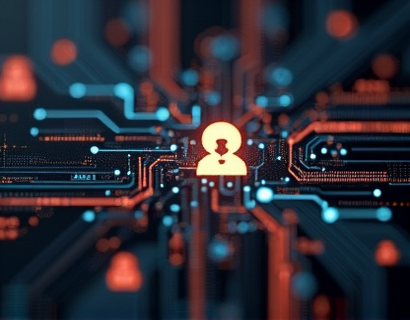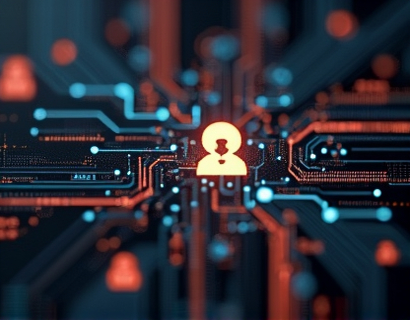Transforming Digital Interactions: The Synergy of Crypto and AI
The intersection of cryptocurrency and artificial intelligence (AI) is revolutionizing the digital landscape, creating intelligent app ecosystems that enhance user engagement and drive growth in the tech sector. This fusion of technologies is not just a trend but a transformative force, reshaping how we interact with digital services and applications. As we delve into this topic, it's essential to understand the fundamental roles that both crypto and AI play, and how their integration is fostering innovation and enhancing user experiences.
Understanding Cryptocurrency and AI
Cryptocurrency, often associated with blockchain technology, is a digital or virtual currency that uses cryptography for security and operates on a decentralized network. Bitcoin, launched in 2009, was the first and most well-known cryptocurrency, but since then, thousands of alternative coins (altcoins) and tokens have emerged, each with unique features and use cases. Beyond being a medium of exchange, cryptocurrencies are also a store of value and a means to facilitate decentralized applications (dApps) that operate without intermediaries.
Artificial intelligence, on the other hand, refers to the simulation of human intelligence processes by machines, particularly computer systems. These processes include learning (the acquisition of information and rules for using it), reasoning (using rules to reach approximate or definite conclusions), and self-correction. AI technologies such as machine learning, natural language processing, and computer vision are rapidly advancing, enabling machines to perform tasks that traditionally required human intervention.
The Synergy of Crypto and AI
The combination of cryptocurrency and AI creates a powerful synergy that is transforming digital interactions. One of the primary ways this synergy manifests is through the use of smart contracts on blockchain platforms. Smart contracts are self-executing contracts with the terms of the agreement directly written into code. They automatically enforce and execute the terms of a contract when predefined conditions are met. AI can enhance smart contracts by providing predictive analytics and adaptive logic, making them more intelligent and responsive to changing conditions.
Another area where crypto and AI intersect is in the realm of decentralized finance (DeFi). DeFi platforms leverage blockchain technology to offer financial services such as lending, borrowing, and trading without traditional financial intermediaries. AI algorithms can optimize these processes by analyzing market data, predicting price movements, and automating trading strategies. This not only improves efficiency but also opens up new opportunities for users to engage with financial services in a more transparent and accessible manner.
Enhancing User Engagement through Intelligent App Ecosystems
The integration of AI into app ecosystems powered by cryptocurrency is redefining user engagement. Intelligent apps can personalize user experiences by analyzing user behavior, preferences, and interactions. AI-driven recommendation systems can suggest content, products, or services that align with a user's interests, thereby increasing engagement and satisfaction. For instance, a cryptocurrency wallet app can use AI to monitor transaction patterns and provide insights or alerts to the user, enhancing the overall user experience.
Moreover, AI can facilitate seamless interactions within app ecosystems. Voice assistants and chatbots powered by natural language processing (NLP) can handle user queries, provide support, and guide users through complex processes. This not only reduces the burden on human support teams but also ensures that users receive instant and accurate assistance. In the context of cryptocurrency apps, AI-powered chatbots can help users manage their digital assets, track transactions, and stay updated on market trends.
Driving Growth in the Tech Sector
The fusion of crypto and AI is not only enhancing user experiences but also driving significant growth in the tech sector. By leveraging the transparency and security of blockchain, combined with the computational power of AI, businesses can develop innovative solutions that disrupt traditional industries. For example, supply chain management can be optimized using blockchain to ensure transparency and traceability, while AI can predict demand and streamline logistics. This dual approach can lead to more efficient operations, reduced costs, and improved customer satisfaction.
Furthermore, the decentralized nature of cryptocurrency enables new business models that were previously impossible. Tokenization, the process of converting assets into tokens on a blockchain, allows for fractional ownership and easier trading of assets. AI can enhance tokenization by analyzing market trends and optimizing token pricing, making these assets more attractive to investors. This synergy is particularly evident in the real estate and art markets, where tokenization is gaining traction.
Case Studies and Real-World Applications
Several real-world applications demonstrate the potential of combining crypto and AI. One notable example is the use of AI in cryptocurrency trading platforms. These platforms employ sophisticated AI algorithms to analyze vast amounts of market data, identify patterns, and make trading decisions. This not only improves the accuracy of trades but also reduces the emotional bias that human traders might have. A platform like this can attract both novice and experienced traders, broadening the user base and driving growth.
Another application is in the field of digital identity verification. Blockchain-based identity systems can store user data securely and privately, while AI can enhance the verification process by analyzing biometric data and behavioral patterns. This ensures a higher level of security and convenience for users, reducing the risk of identity theft and fraud. Such systems are particularly valuable in industries like finance and healthcare, where secure and efficient identity verification is crucial.
Challenges and Considerations
Despite the numerous benefits, the integration of crypto and AI also presents challenges that need to be addressed. One of the primary concerns is regulatory compliance. The crypto space is still largely unregulated, and the rapid evolution of AI technologies adds another layer of complexity. Businesses must navigate varying legal frameworks and ensure that their applications comply with local and international regulations. This requires a proactive approach to legal and compliance teams to stay ahead of regulatory changes.
Another challenge is the technical complexity involved in integrating AI with blockchain systems. Developing robust and scalable solutions that can handle the computational demands of both technologies requires expertise in multiple domains. Collaboration between AI researchers, blockchain developers, and cybersecurity experts is essential to overcome these technical hurdles and create reliable, user-friendly applications.
Future Prospects
Looking ahead, the synergy between crypto and AI is poised to bring about even more transformative changes. As AI algorithms become more advanced, we can expect to see more sophisticated applications in areas such as predictive analytics, autonomous systems, and enhanced user interfaces. The rise of Web 3.0, a decentralized internet powered by blockchain, will further amplify the impact of AI in creating intelligent, user-centric digital ecosystems.
Moreover, the increasing adoption of cryptocurrencies and blockchain technology in various sectors will create new opportunities for AI to add value. From smart cities to healthcare, the combination of these technologies can lead to more efficient, transparent, and secure systems. The potential for innovation is vast, and those who embrace this synergy will be at the forefront of the next digital revolution.
In conclusion, the fusion of cryptocurrency and AI is not just a technological trend but a fundamental shift in how we interact with digital services. By enhancing user engagement and driving growth, this synergy is reshaping the tech landscape and opening up new possibilities for businesses and users alike. As we continue to explore and harness the power of these cutting-edge technologies, the future of digital interactions looks brighter and more promising than ever.










































